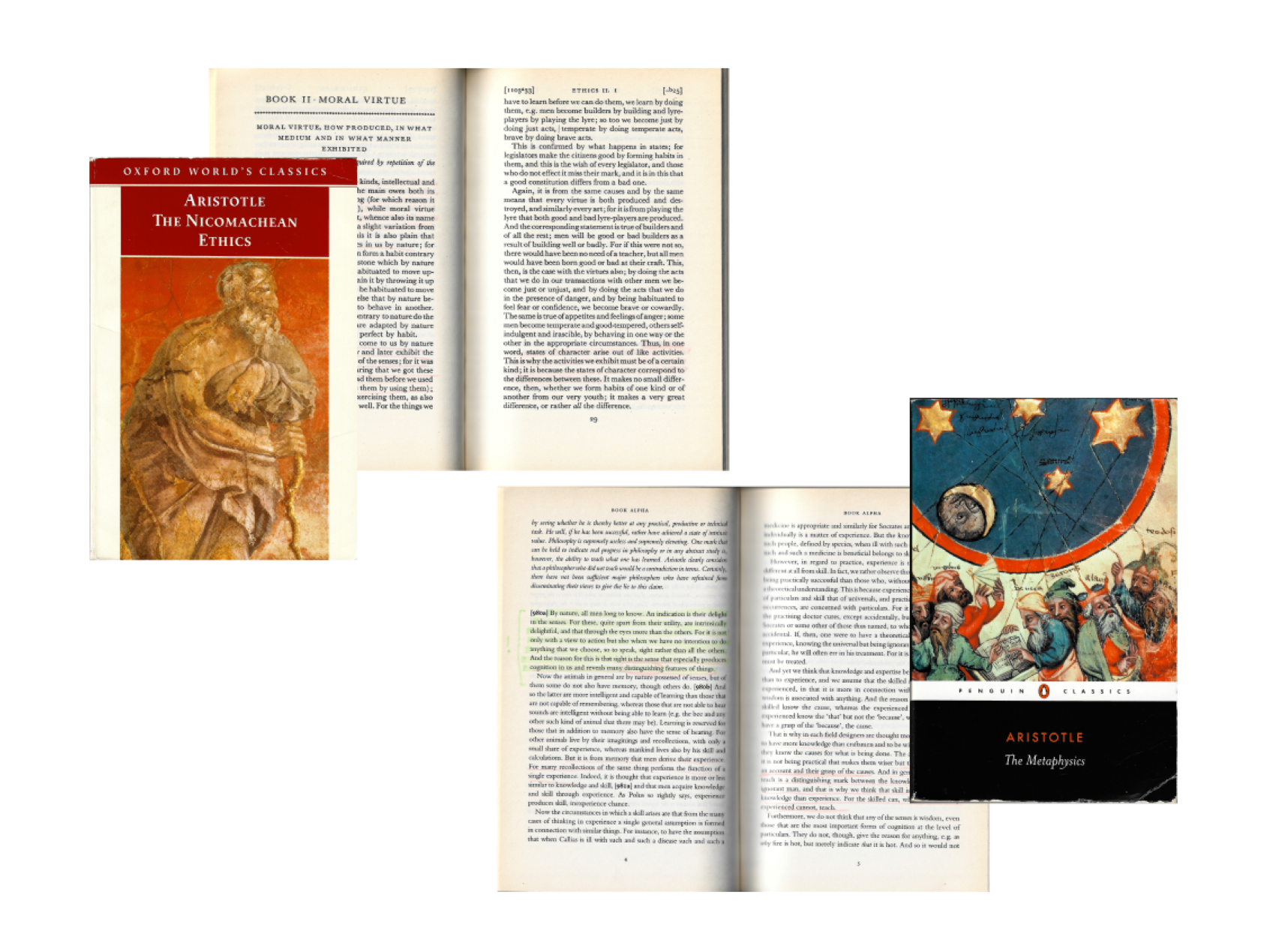
It’s human nature to understand the world by analyzing and creating distinctions and classifications. Aristotle, in his Nicomachean Ethics, argues that our happiness, or eudaimonia, is determined by the virtuous actions we choose to do throughout our life. He believes the pursuit of knowledge and understanding is a particularly noble virtue and I agree as researcher and innovator. I find a lot of personal satisfaction in determining truth on my own, rather than blindly accepting information as truth. Approaching the world like this makes me feel incontrol, like an active participant in reality.
In the opening paragraph of Metaphysics, Aristotle explains that we have a preference for sight to help us develop a deeper understanding of the world because it’s the easiest way to comprehend and distinguish various aspects of reality. We create order by establishing visual rules of distinction that we want everyone to follow. This is proven with modern science, we know our brains’ schemas act as a mental framework for classifying and organizing.
But while we strive for order by establishing universally accepted distinctions, our innate curiosity leads us to reexamine what has already been established and create new rules for distinction. This process of continuous questioning and refinement eventually leads to some conclusion. My essay explores the rise and fall of the power of types of distinction through the lenses of "The 5 Classical Orders of Architecture" in an attempt to find a relevant framework of distinction that affects modern society.
Starting with the earliest recorded use of the pillar, the temple of Solomon featured pillars named Boaz and Jachin. While their significance to the Hebrews is conjectural, it's clear that they were more than decorations. They conveyed some type of message and whether they planned to or not, the design created distinction from other sacred and secular buildings in the city. Fast forward to ancient Greece, where temples served as homes for the gods. The design of these columns wasn't just for structural use, but the design of the capital captured the nature of the deities they were dedicated to.
During the Renaissance, a period marked by the revival of classical learning, thinkers like Palladio and Sebastian Serlio analyzed Vitruvius' works for deeper insights, and expanded the function of classical orders to create organization within the city. Serlio, in 1537, expanded the concept of capitals to reflect the function and identity of city buildings. Tuscan columns, for example, were perfect for military and fortress utility structures because of their rustic straightforward design. It creates order in a city by providing visual distinction that matches the function. He creates this framework for all 5 of the classical orders. I argue that this would be the peak of power for this style of distinction. What once started as a form of communication, turned into a way of creating order in a city.
Throughout Rome and the Renaissance, architects examined and reinterpreted the classical orders, each publishing their own interpretation and rule. In 1650, French nobleman Roland Freart pointed out differences in these rules and questioned who’s correct. This debate was settled by Claude Perrault in 1683, who standardized the classical orders, leaving no room for interpretation.There was no eudaimonia gained from analyzing the classical orders, so we moved onto other tools to help us create distinction and order. Because we moved on to another system of distinction, the classical orders lost their power.
Another framework for distinction that’s on its journey towards losing power is ethnicity. In America, cultural identity is becoming more significant than one's ancestry or family background. Historically, lineage often determined a person's social class, but this is becoming less relevant. While ethnicity still plays a role in certain conflicts, such as the situation in Gaza (which is admittedly a complex issue) One can’t deny that civilians in Gaza are being categorized not by their actions or morals, but by their ethnicity and heritage.
I think the trend towards globalization, intercultural relationships, and a digital world is making ethnicity less critical, turning it into a mere interesting fact about a person. For example, saying "I'm Megan and my ancestors are from the Cebuano mountain lineage" might soon be just an interesting tidbit about my background rather than a defining characteristic that enables privilege or special treatment. We're moving towards using other aspects to define ourselves.